#tropical forest reptiles
Photo



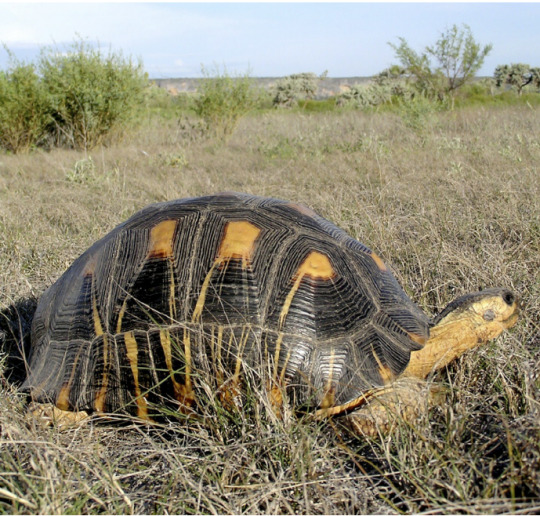
The Radiant Radiated Tortoise
One of the rarest tortoise species in the world, the radiated tortoise (Astrochelys radiata) is only native to the island of Madagascar. They can be found throughout the island, but they are most abundant in the southern part of the island, among the scrub and thorny brush. In addition to their home range, this species has also been introduced to the nearby island of Reunion.
Like all tortoises, the radiated tortoise is an herbivore. Grasses, leaves, and decaying vegetation constitute about 80-90% of their diet, and is supplemented with flowers, fruits, and cacti- particularly prickly pear cacti. Finding food also makes up the majority of their daily activity, as they move around their territories to find fresh growth. A. radiata’s thick shell deters most predators, but reptiles and birds are known to feed on eggs and hatchlings.
The radiated tortoise mates all year round, due to the relatively consistent climate and food supply. When a male encounters a suitable female, he seduces her by bobbing his head and smelling her hind legs. If she’s receptive, he will mount her in a surprisingly noisy, violent affair-- both parties hiss and grunt, and in some cases the female’s shell may crack from the force of the male’s plastron striking it.
If mating is successful, the female lays a clutch of 3-12 eggs in an excavated burrow. These eggs incubate anywhere from 5 to 8 months, depending on the average temperature of the nest. The young that emerge are quite small, only 3-4 cm (1-1.5 in) long and lacking the distinctive patterned dome shell. These tortoises will take 16-20 years to reach their full size and become ready to mate. The lifespan of this species varies widely; most individuals live only 40-60 years, but some have been recorded reaching 188.
A. radiata has a very distinctive look. The shells are extremely curved, and is dark brown or black with a striking yellow star pattern that gives the species its name. The rest of the body is dusty yellow, except for a dark patch on the back of the head. The limbs and tail are also covered in thick, raised scales that offer extra protection against predators and help the tortoise retain moisture. Compared to other tortoise species in terms of size, the radiated tortoise is right in the middle: at their maximum, they can reach 40 cm (16 in) long and weigh up to 15 kg (35 lbs).
Conservation status: The IUCN has classified the radiated tortoise as Critically Endangered, due to habitat loss and overcollection for the pet trade. Wild populations have been Many zoos and conservation programs keep captive populations for breeding and reintroduction.
If you like what I do, consider leaving a tip or buying me a ko-fi!
Photos
Mehgan Murphy
Jackelin Reyna
Rajo Adolphe Landry Andrianiaina
Miguel Pedrono
#radiated tortoise#Testudines#Testudinidae#tortoises#turtles#reptiles#scrubland#scrubland reptiles#tropical forests#tropical forest reptiles#grasslands#grassland reptiles#africa#madagascar#biology#zoology#animal facts
266 notes
·
View notes
Text

A common green forest lizard (Calotes calotes) on a tree at Sinharaja rainforest in Kalawana, Sri Lanka. Sinharaja is the country’s last viable area of primary tropical rainforest
Photograph: Thilina Kaluthotage/NurPhoto/Shutterstock
#thilina kaluthotage#photographer#nurphoto#shutterstock#common green forest lizard#lizard#calotes calotes#sinharaja rainforest#kalawana#sri lanka#tropical rainforest#nature#reptile
50 notes
·
View notes
Photo
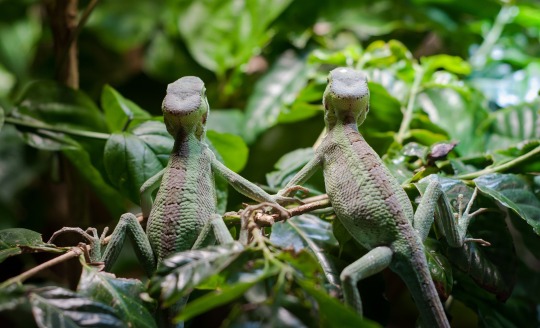
#upl#tropics#tropical forest#tropical aesthetic#tropical#jungle#junglecore#junglewave#jungle aesthetic#lizard#lizards#animals#reptile#reptiles#love#hand holding
97 notes
·
View notes
Photo

(via "Flying lizard and flowers" Graphic T-Shirt for Sale by KnowingWonder)
A flying lizard with orange wings and a brown body is surrounded by filigree and two orchids.
#findyourthing#redbubble#knowingwonder#reptiles#dragon#flyinglizard#gliding#wing like membrane#lay eggs#tropical rain forest membranes create wings orchid flowers feed on termites
2 notes
·
View notes
Text

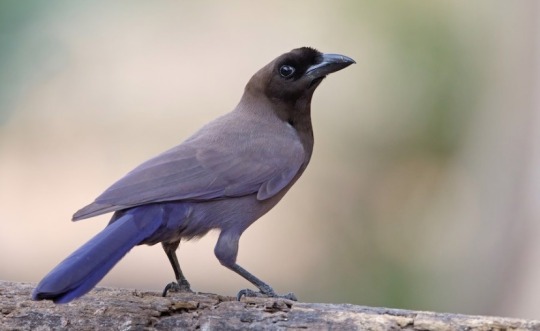



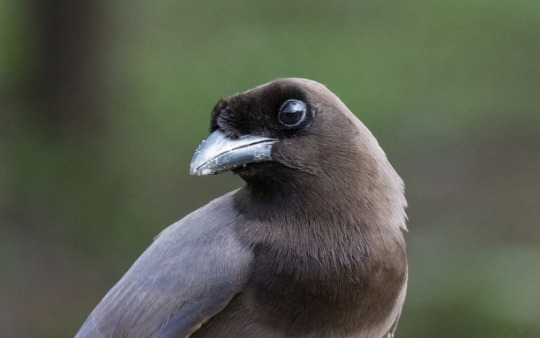
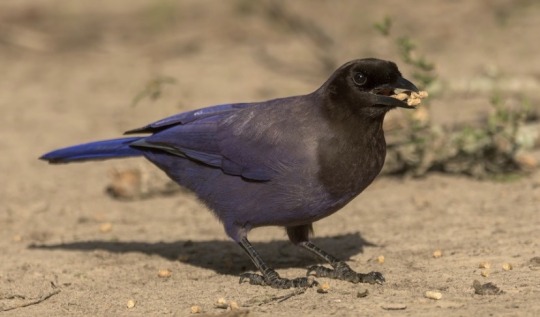
the purplish jay is a medium-sized member of the corvid family found in portions of south america (bolivia, brazil, colombia, ecuador, guyana, and peru). like other jays, these birds are noisy and social, and often travel in loud groups through the forest canopy. they prefer tropical & subtropical lowland forest habitats. they are named for their distinctive purple-blue color. like other jays, they are omnivorous, and feed on everything from fruits and insects to small reptiles and eggs.
5K notes
·
View notes
Photo

In Tortuguero National Park with my students @eftours June.10.22 #costarica #costarica🇨🇷 #eftours #reptile #wildlife #reptiles #birds #tropical #rainforest #forest #hiking #river #hikingadventure #boatlife #backpacker #wilderness #adventure #adventuretravel #bird #outdoors #outdoor #outdoorphotography #travel #travelgram #travelphotography #traveltheworld #traveladventures #natgeo #natgeoyourshot #yourshotphotographer (at Tortuguero, Costa Rica) https://www.instagram.com/p/CfQBsMCpXOX/?igshid=NGJjMDIxMWI=
#costarica#costarica🇨🇷#eftours#reptile#wildlife#reptiles#birds#tropical#rainforest#forest#hiking#river#hikingadventure#boatlife#backpacker#wilderness#adventure#adventuretravel#bird#outdoors#outdoor#outdoorphotography#travel#travelgram#travelphotography#traveltheworld#traveladventures#natgeo#natgeoyourshot#yourshotphotographer
0 notes
Text
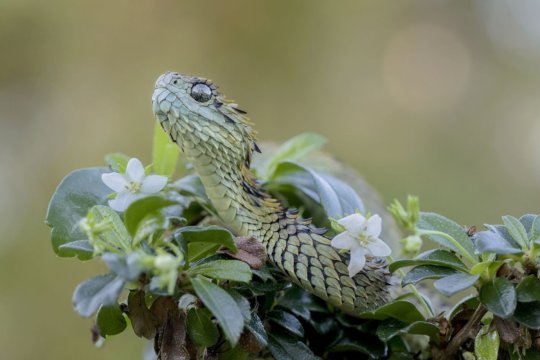


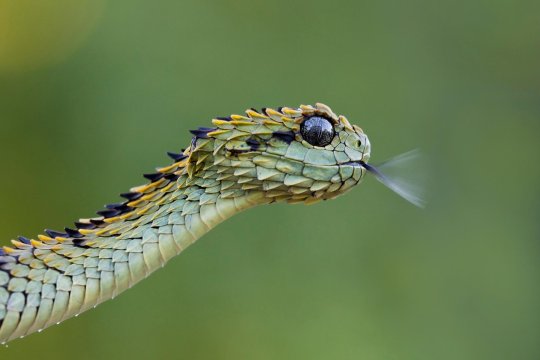
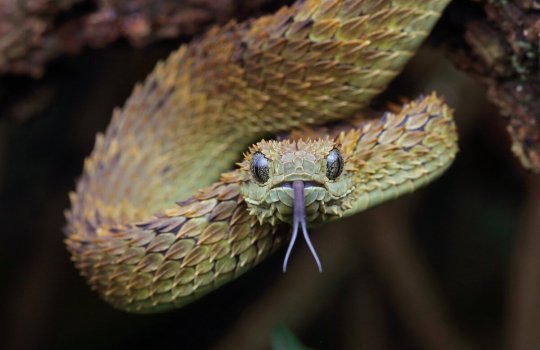


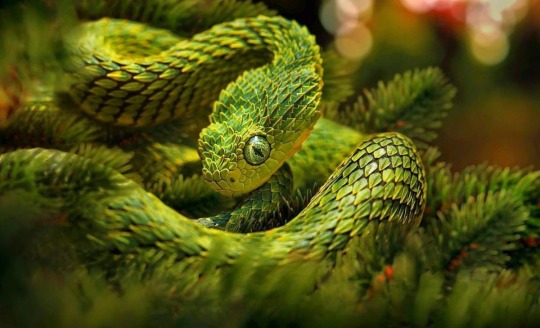
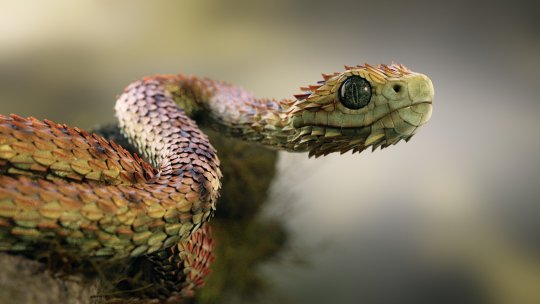

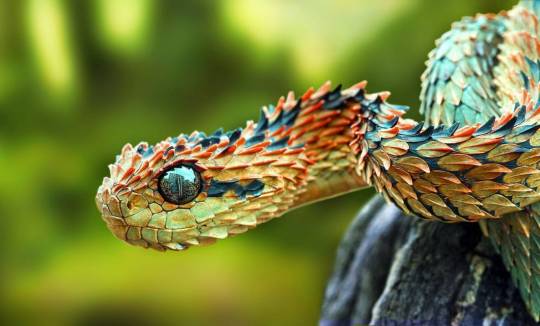



Колючая кустарниковая гадюка (Atheris) — род ядовитых змей, обитающий в тропических лесах Южной Африки в таких странах, как Конго, юго-восточной Уганде и западной Кении. Считается одной из самых красивых гадюк, благодаря впечатляющей изогнутой чешуе в форме колючек, имеющей яркий разноцветный окрас. Благодаря такому необычному строению чешуек, придающим змее щетинистый вид, она становится похожей на сказочных грозных драконов, поэтому сильно ценится среди владельцев искусственных террариумов. Ярко окрашенные колючие гадюки (желтые, красные или серые) редко встречаются в дикой природе.
Самцы колючей кустарниковой гадюки достигают в длину до 75 сантиметров, а самки — до 60 сантиметров. Колючая гадюка — живородящее пресмыкающееся, в среднем самка рожает до 12 детенышей за один раз, длина которых составляет около 15 сантиметров. Змея отлично лазит по кустарникам, небольшим деревьям и крупным цветам. Охотится, в основном, в ночное время на лягушек, ящериц, жуков и мелких млекопитающих. Человеку лучше избегать встреч с этой гадюкой, поскольку она относится к ядовитым змеям. Яд этой гадюки содержит нейротоксин с большой порцией цитотоксина. Поэтому, если колючая кустарниковая гадюка укусит человека, то его мышцы не только парализует, а приводит к сильному кровотечению внутренних органов.
The spiny bush viper (Atheris) is a genus of venomous snakes found in the tropical forests of South Africa in countries such as Congo, southeastern Uganda and western Kenya. Considered one of the most beautiful vipers, thanks to its impressive curved, spine-shaped scales, which have a bright multi-colored color. Thanks to this unusual structure of scales, which gives the snake a bristly appearance, it becomes similar to fairy-tale formidable dragons, and therefore is highly valued among owners of artificial terrariums. Brightly colored spiny vipers (yellow, red or gray) are rarely found in the wild.
Males of the spiny bush viper reach a length of up to 75 centimeters, and females - up to 60 centimeters. The spiny viper is a viviparous reptile; on average, a female gives birth to up to 12 young at a time, which are about 15 centimeters long. The snake is excellent at climbing bushes, small trees and large flowers.It hunts mainly at night on frogs, lizards, beetles and small mammals. It is better for a person to avoid encounters with this viper, since it is a poisonous snake. The venom of this viper contains a neurotoxin with a large portion of cytotoxin. Therefore, if a spiny bush viper bites a person, then his muscles will not only paralyze, but lead to severe bleeding of internal organs.
Источник:https://prajt.livejournal.com/468465.html, https://t.me/+fxNu20lM26MwYzhi, vk.com/wall-149472484_824944, //www.zoopicture.ru/atheris-hispida/,/bogatyr.club/6936-koljuchaja-kustarnikovaja-gadjuka.html, //kartinki.pics/pics/1748-koljuchaja-kustarnikovaja-gadjuka-art.html,//livt.net/info/2017/07/09/kolyuchaya-kustarnikovaya-gadyuka/, dzen.ru/a/XLu9R3Ii0ACzPYI-.
#nature#video#reptiles video#reptiles#herpetology#photo of snakes#snake#viper#spiny bush viper#plants#macro photo#природа#видео#герпетология#пресмыкающиеся#рептилии#змея#фото змей#Колючая кустарниковая гадюка#растения#макрофото
214 notes
·
View notes
Text
I love that people on TikTok now make headcanons that portray Ghost in a more realistic way and how all his torture and SA affected him.
We also know that Ghost is most likely absolutely scared of snakes because of his father 🐍
Now imagine this:
You have been on a mission with Ghost in some tropical country where you often stumble upon those creatures. It's hot and humid, you feel like your clothes are drenched with sweat, you assume that Ghost is irritated because of this, he snaps at you more frequent than usual. You grit your teeth and continue the mission, as usual. You have known him long enough to learn that under his rough exterior he cares and sometimes you'd even crack some jokes. However now he seems to be constantly on the edge and you can feel the tension that lingers around him. You wonder why since the mission wasn't particulary hard and you have been on your best behavior. You have no idea so you just sigh and follow him.
You weren't scared of snakes as one of your friends is a serpent lover and has dozen of them. They have really impressive knowledge, as a consequence you have spent many hours listening countless lectures featuring snakes and how to deal with them, thanks to them you knew how to handle aggressive ones too. Twice you helped you friend to catch some runaway snakes.
At some point you had to stop and take a break. You stand between tall trees when sun is burning your skin, you squint your eyes. As Ghost chugs down his water you notice reptile hanging down on the branch, ready to attack him. Your reaction is instant and you catch the offender before it has a chance to sink it's teeth in Simon's neck, holding it by the head as it wraps rest of it's body around your arm. You quickly pull out your knife and plunge it through the beasts skull and throw the lifeless body away with silent motherfucker under your breath. You wipe your hand along with the knife and look at Ghost who stands there bewildered. "You good there, LT?" You ask when he stays silent, for a little too long to your taste, watching you intenly. Your voice brings him back to reality. "Yeah." He grumbles but his eyes go softer when looking at you. "Be careful next time." You smile hearing this and explain to him that you're not scared of snakes thanks to your friend. You both move further through the forest you as you recall how you helped your friend to catch a snake that run from its terrarium. He listens you attentively, every word. You can't see it, because of his balaclava, but he smiles. He thanks heavens for your presence like you were an angel that has been sent for him, you did put him at ease so maybe he will be able to sleep this night in the tent. You notice that he seems more relaxed and stays closer to you when you move further. You smile to yourself as your heart beats a little bit faster in your chest.
***
What has this fandom done to me, I haven't written shit since I was 14 😀 and I'm 28 now
#simon riley x reader#simon riley x you#simon riley x y/n#Simon riley x yn#ghost x reader#ghost x y/n#ghost x you#simon ghost riley#simon riley#ghost#ghost call of duty#ghost cod#call of duty modern warfare#tiktok call of duty#headcanon#headcanons#fanfic#fanfiction#imagine#cod#cod mw2#cod mwii#modern warfare 2
761 notes
·
View notes
Text
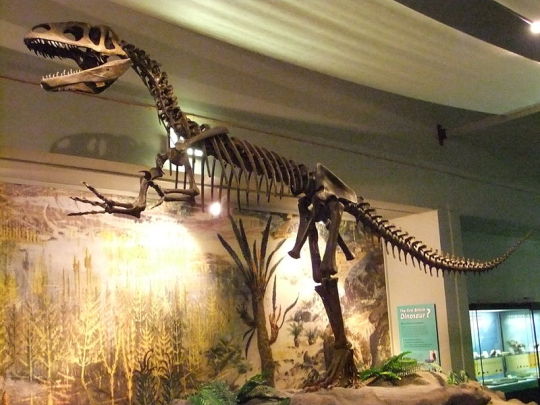

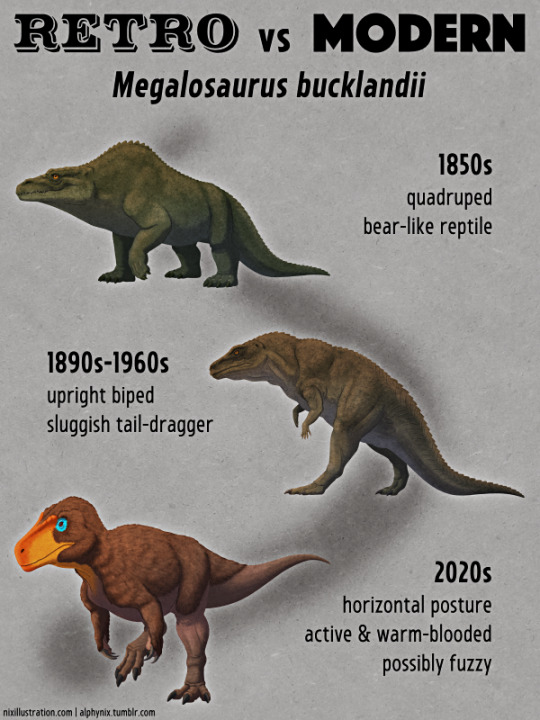

Happy 200th birthday Megalosaurus! Megalosaurus is an extinct genus of theropod dinosaur which lived throughout what is now Europe during the middle Jurassic period some 174 to 163 mya. Although it now only exists in drawings what is thought to be the first fragment of Megalosaurus consisting of a partial femur was discovered in 1676 from a limestone quarry in Oxfordshire by professor Robert Plot, who due to the unprecedented nature of the find, declared it to belong to a biblical giant. In 1763 the bone was given the name 'Scrotum humanum' by Richard Brookes, due to the rather crass yet accurate appearance of the end of the bone to a human scrotum. This name/description was never formerly accepted by any scientific body, but did prompt Rev. William Buckland to begin amassing various other remains from that same Oxfordshire quarry including a piece of a right lower jaw, a thigh bone, ribs, some pelvises, a foot bone, and several vertebrae. After years of study Buckland realized that these specimens all belonged to the same species of giant reptile which he named Megalosaurus meaning great lizard on February 20th 1824. Megalosaurus was 1 of 3 genera which Richard Owen used to found the Clade Dinosaur, marking Megalosaurus as the first non avian dinosaur to be formally described. Over the following centuries over 50 species would be classified as Megalosaurus however nearly all have been determined to belong to other taxa, leaving only the original Megalosaurus bucklandi as valid. Reaching around 20ft in length and 1,500lbs in weight megalosaurus was amongst mid-Jurassic Europe’s largest predators. It had a long tail, strong stout legs, a robust body, short yet muscular arms, and large head, equipped with long curved teeth. In life Megalosaurus would have inhabited tropical forests, wetlands, and coastlines feeding upon fish, invertebrates, amphibians, aquatic reptiles, and other dinosaurs in the island chain that at the time constituted Europe.
Art used belongs to the following creators
Megalosaurus: Julius T. Csotonyi
Megalosaurus through the ages: Nix Draws Stuff
Megalosaurs 200th Anniversary: NazRigar
#pleistocene pride#pliestocene pride#mesozoic#jurassic#megalosaurus#dinosaur#paleoart#200thanniversary#megalosaurus 200th birthday
42 notes
·
View notes
Text
Anthropomorphic animal lore (subject to change)
I have been putting off this explanation because it's been daunting to try and fully illustrate it, so i am going to sketch and infodump this out. beware of mistakes or things that don't make sense yet x,O
anthro: humanoid body plan animal
feral: regular animal body
There are 3 main anthro species in my cotl au
Unguibus: "clawed people" canines, felines, rabbits, rodents, ect.
Ungulates: "hooved people" deer, cows, elephants, ect.
Avians: "bird people" self explanatory
All of these anthros are omnivorous, although some require more meat in their diet than others. Main sources of meat in these lands would be large, animalistic insects (like the enemies seen ingame), and feral (non-anthro) species: fish, amphibians, reptiles, and birds (will be explained later)
This cannon exists in a mountainous and forested biome with valleys, rivers, and a coastline. Animals that naturally live in these biomes will be seen as colonies, villages, towns, camps, settlements, ect. in this universe. So if you wanted to see elephant people, hippo people, maned wolves, tropical avains, ect. You would need to travel out of the lands. Instead you'll find coyotes, foxes, deer, sheep, raccoons, eagles, ect.
Lands in the old faith that have been affected by their ruling bishops, however, will have different biomes and new people.
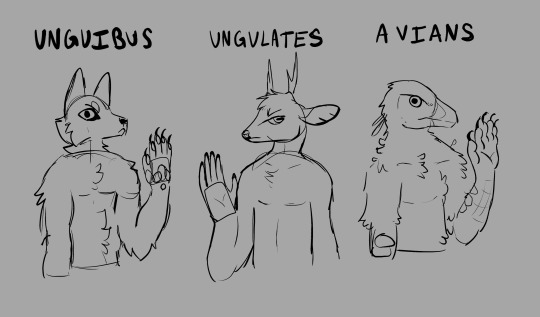
Unguibus and Ungulates evolved from their original (feral) forms due to unknown divine intervention: (they used to look like regular animals)
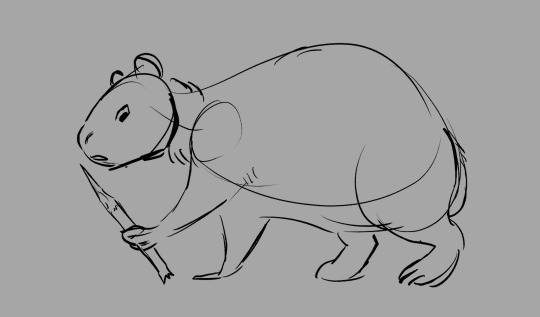
Ungulate and Unguibus groups hunted and ate eachother throughout their evolutionary history. They have joined together, and fought each-other all across the world. The majority of species reserve their own cultural backgrounds and histories, and stigmas to match.
Many of these species have completely different gender identities/roles and cultural norms, which I will explore in sheepfolk and catfolk soon!
For a random stigma example, cats may be called "rat eaters" due to some groups of catfolk's persecution and consumption of ratfolk and other rodent unguibus in the past.
Ungulates of species that are known to scavenge on small animals and carcasses in real life, have eaten smaller "prey" anthros in my cannon. For example, irl deer sometimes eat small animals- so in my cannon, some groups of deerfolk have worked alongside predatory anthro species that used to hunt them, like canines, in order to hunt other anthros.
Other species like sheep lived more docile lives of farming, and some avian or catfolk groups may have only fished, ect. ect.
Most of this is speculative background ideas that won't be looked into that much, because now that magic and cults have taken over and anthros have become more accustomed to living in towns and developing technology, things have mixed together enough for species differentiation to matter less and less over time. Especially in Lambi's cult.
Domestic species like dogs, cats, sheep, ect. exist either because of population isolation or selective racial purity. (yikes i know)
Subspecies exist due to geological location and habitat (ex: indian wolf vs gray wolf, brown bear vs sun bear, ect,)
Species differentiation will eventually only matter for reproduction. Foxes, wolves, coyotes and dogs can interbreed because they are all canines but a zebra and a lion could not. The world will eventually melt together and the concept of visible subspecies and breeds will be history, but i'm getting ahead of myself-
Due to the rise of deities in the lands of the old faith, there are new anthro people emerging from the likeness of the bishops.




I will have to dive into these individual species and what they look like much much more in the future. This post was a bit of a huge fucking mess of me trying to get out my thoughts.
Considering that Unguibis and Ungulates have gone completely anthro, you might be wondering why birds and reptiles can be found feral and anthro in this universe? Bird anthros were created alongside the rise of gods in order to aid them. For example, Clauneck and Kudaai. Althrough this plan did not follow through fully, as there are plenty of individual avians that lived with their own ideas, acting as regular mortals do. Reptiles had a similar treatment, although it must've been even less effective, considering flinky has no humanoid body. Most of this is going to be left up to speculation.
Another thing I will get into besides sheep vs cat gender & culture is "turned" anthros. Which are the main enemies Lambi will fight. The turning of an anthro, and the nature of your physical form changing to suit your god will also explain Forneus's size and age, Clauneck and Kudaai's size & faces, why heretics on crusades.. look like the way they do...ect.
WHOO. ALL DONE RANTING! This is might have a few contradictions in it, but I needed to vomit all of this out in SOME way. It's so hard to communicate this without dedicating all my time to world building instead of character exploration & narilamb.
All of this blurb exists because of my love for spec bio, xenofiction, and some neurodivergent need for furry media to make biological and ecological sense with their species choices because 90% of the time it does not.
#cult of the lamb#worldbuilding#i need to tag this au as SOMETHING so maybe ill name my AUs after their lambs?#< if i ever post about any other than this one lmaoo#CotL Lambi Arc#how does that sound?#cotl au#cult of the lamb au
84 notes
·
View notes
Text
A writer’s guide to forests: from the poles to the tropics, part 8
We’ve made it to the tropics. I hope you enjoyed this, and found it useful in your writing.
Tropical rainforest
Probably the most recognizable of forest environment, and among the most threatened.
Location-Latin America, Africa, Australia, Indonesia, and the Pacific islands in between the tropics of Cancer and Capricorn. Many forests have been felled or heavily altered by human activity.
Climate-Subtropical to tropical, with conditions being wet year round. Rain does not fall all the time, with a defined rainy and dry season. (What’s the difference? Rainy season has rain almost daily while in the dry season you will have to make do with high humidity and morning fog) At higher elevations, nights are cooler, though still well above freezing, and mist and rain are more common(this is why mountainous RF are called cloud forests)
Plant life- This is a tree dominated environment. The understory and forest floor are dark, unless trees have recently fallen. Many small plants are arboreal, nestled in the upper branches of trees. Vines and other climbers use larger plants as scaffolding. In areas of poor soil, tropical pitcher plants (Nepenthes spp.) and bladderworts (Utricularia spp.) get much needed nutrients from animal sources.
Animal life- Rainforests are the most biodiverse environments on Earth. Insects are everywhere, as are the animals that eat them. Birds and primates can be found from the canopy to the forest floor. The moist conditions make for an ideal habitat for frogs and toads. Apex predators are the big cats-think jaguars, tigers and leopards. Some species of herbivores can be quite large; Africa is home to gorillas and forest elephants, while the island of Borneo, Sumatra, and Java support rhinos and orangutans (though the further of these species is uncertain)Waterways are home to all sorts of fish(there are more species in the Amazon river than in the Atlantic Ocean), and larger animals, such as otters, crocodilians, and even river dolphins. Isolated islands have far fewer mammal species, with bats being the only ones, but hardy insects, reptiles, and birds making up the majority of the biomass. Deforestation and the introduction of invasive species have caused the extinction of many animal species, with island forests being the hardest hit.
How the forest affects the story- When one thinks of societies in the tropics, it usually is through the lens of western stereotypes designed to shock audiences and give ‘civilization’ something to conquer. Avoid this at all cost! There is more to the forest. Before the Spanish conquest, the Amazon was home to cities, and the agricultural societies of New Guinea are believed to be contemporaries with the farmers of Mesopotamia.
Grain does not do well in the tropics, so farming will be based around plants such as açaí, coconuts, taro, breadfruit, bananas, and manioc. These can be supplemented by hunting and fishing, but long term storage will have to be addressed. High humidity is a breeding ground for bacteria and fungi, so organic material will have to be kept dry so they don’t rot. The concentration of microorganisms also means that good hygiene is needed to avoid disease.
Settlement will always cause disruption, and the extent of your character’s activities can have a big impact on the forest, and your story. And remember, the activity of a small village will be different to that of large scale logging. Management, use, and abuse of the rainforest can be a driving factor in the plot. How will your characters react? Is the threat from outside or from within? The destruction of the rainforest is one of the main factors, along with unmitigated greenhouse gas emissions that is causing the current climate crisis. Can your characters do better? Or will you create a cautionary tale that shows us the grim future we are currently barreling towards? (That choice, my dear writers, is completely up to you)
#writing#creative writing#writing guide#writing inspiration#writing prompts#writer#writers#writer on tumblr#writeblr
34 notes
·
View notes
Text



Mosey On with the Mojave Desert Tortoise
Also known as the California desert tortoise, or more simply the desert tortoise, Gopherus agassizii is one of the few tortoise species native to North America. As its name implies, it is found only in the Mojave and Sonoroan deserts, from northern Mexico into the southwestern United States; there it is the state reptile of California and Nevada. Their habitat consists mainly of of desert scrub, where temperatures can reach over 60 °C (140 °F); however, in the southern reaches of its range, the desert tortoise can also be found in tropical deciduous forests.
To beat the heat, G. agassizii digs burrows where they can rest when its too hot or too cold to forage, and where they can aestivate during the hottest months of the summer and hibernate in the winter. These burrows can be quite extensive, reaching 10 m (32 ft) long, and up to 25 tortoises may share the same burrow. Individuals will often dig out several burrows in their territory, which can range anywhere from 3 to 25 hectares (7 to 61 acres). Many of these burrows will also become homes for other animals, including rattlesnakes, gila monsters, squirrels, burrowing owls, and quail.
Like all tortoises, the Mojave desert tortoise is herbivorous. Most of its food is grass, but due to the limited choice in the desert they may also consume wildflowers, shrubs, and cacti-- both fruits and new growth. Due to their hard shells, this species has few predators as adults, but hatchlings are vulnerable to foxes, coyotes, birds of prey, and gila monsters.
Very little rain falls in the desert, and so the desert tortoise is well adapted to do without; the species stores up to 40% of its body weight in water in its bladder, to be absorbed later. Individuals will also dig shallow 'watering holes' in the ground, to be visited after rainfall. G. agassizii also gets much of its water content from its diet, and can go up to a year without drinking.
Desert tortoises typically mate in the spring, from March to May, though mating can continue until autumn. Males seek out and fight each other for access to females, typically by ramming each other or attempting to flip each other over. However, this species is also one of the few known to engage in homosexual activity, particularly between males. Because this is not a species that mates for life, or maintains strict social hierarchies, the purposes of this intercourse is unknown.
Females can store sperm for up to eighteen months, and typically lay their eggs in the following year from May to July in clutches of 3 to 8. These eggs are laid in a deep nest dug into the ground, and take 90 to 135 days to hatch. Young emerge in the fall, and receive no parental care. If they survive, individuals may take between 10 to 16 years to become fully mature, and can live to be 80 years old.
Desert tortoises are well adapted to blend into their environments. The shell is typically a brown or dull yellow, while the body is tan or dusty grey. There is little difference between males and females, save that males are slightly bigger and have a concave plastron (lower shell) to accommodate mounting onto a female. The species is medium sized, ranging between 11 to 23 kg (24.23 to 50.66 lb) in weight and 25 to 36 cm (10 to 14 in) in length.
Conservation status: The IUCN has ranked the Mojave desert tortoise as Critically Endangered. Their primary threats include habitat fragmentation and loss, predation by feral dogs, and road mortality. The population is estimated to have declined by 90% since the 1980s. However, conservation programs are being implemented to preserve critical habitat, and several zoos and conservancies have captive breeding programs for the species.
If you like what I do, consider leaving a tip or buying me a ko-fi!
Photos
Dana Wilson
Bruce D. Taubert
Sandra Leander
#mojave desert tortoise#Testudines#Testudinidae#gopher tortoises#tortoises#turtles#reptiles#deserts#desert reptiles#scrubland#scrubland reptiles#central america#north america#southern north america#animal facts#biology#zoology
64 notes
·
View notes
Text
Father Figure
Father figure!Stolas x Gn!Reptilian!reader

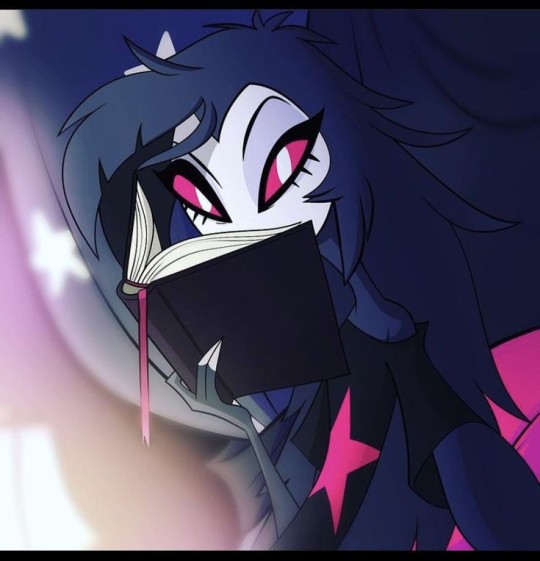
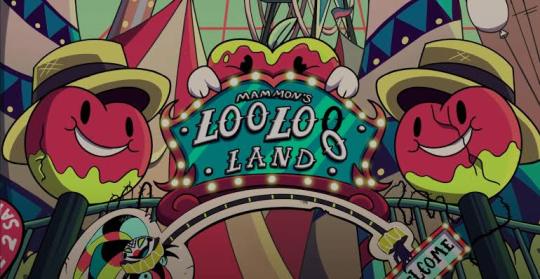


@cirrustix Asked ;; Hi hi , I saw your reqs were open , and can I request Helluva Boss , with Stolas and a gn!reader that's around the same age as Octavia but they're a reptilian , and Stolas is a father Figure to them
Hi hello !! Thank you for requesting ! ♡
I only wrote headcannons for this . . I'm sorry if this isn't what you wanted , if there's something wrong please do tell me ( ◜‿◝ )
If anyone's interested on requesting go here first !
I'm not really familiar with reptiles and I have no idea what type of reptile Soo . . I figured to go for the anaconda . You can ask me again but with a different reptile , I got all of the INFOS from google . My explanation sucks and I'm terribly sorry if it doesn't make sense at the end of the little backstory
TW mentions :: The word Sharp , Shed

Some Traits of the character ::
Same Age as Octavia [17 years old]
You're about 253 cm / 8 feet. [anaconda are so huge and tall ffs]
You can change into your fully snake form without have a human like upper body
Snakes have poor eyesight
Amazing swimming ability
Sharp [eye color] glowing eyes
Anaconda can hold their breath for 10 minutes

How did you guys Met ? ?
Well firstly .. You and Octavia met before meeting her father .
You were around 7 years old alone in Hell , You have no idea where , when , or how you ended up in this world . You're scared and started to slither around so slowly and carefully looking at the unfamiliar places after a few days ,, Surviving on your own , having your own little habitat behind some buildings , You were upset that there was no tropical forests but it's better than having no place to sleep in . You saw this colorful yet terrifying amusement park / carnival [?] With blasting music and kids screaming of joy . . Some kids are ,, well crying but let's ignore that
You secretly creeped in with no one catching you . You were in the shadows looking at the games , food , toys , kids , everything . You can't help but smile and roam around for more out of excitement , a couple of kids sees you and they were terrified . You were about 5'8 , Sharp Teeth and Nails , Dark green with brown and black spots Scales , long below body tail , Long snake tounge sticking out of your mouth , Intimidating energy coming from you , You stare at them back . They run away from you dropping everything from their hands abandoning their plush toys , trying to find their parents for comfort . It upsets you that the kids your own age were scared of you , You grab the abandoned Plush toy off the ground you peaked interest in it and grab it closer towards you . You heard this cute little sing song coming towards a tent , You being a curious and anxious kid , You slid in and colorful lights flashing and powerful music blasting . You quickly slither into something just to hide from the flashing lights and loud music , Snakes are rather sensitive to Flashing Lights [Mostly UV lights] and loud music . You got stressed out and quietly cried out of frustration . After a few minutes hours , it stopped . A few kids were laughing, some are crying , You try to quickly get out but a strange owl kid were looking at you , INFRONT OF YOU . You blabbered random words that doesn't makes sense , She just giggled and ask why were you crying . After a few minutes of talking with her , You now know her name and her name was Octavia , a stranger owl man calls out for her and You both saw her parents . They look like they had a fight , It made you worry but Octavia run towards her Father he twirl her around then hug her tightly . Her mother rolled her eyes and it landed on you , she scoffed and walk away . After the daughter and father's laugh slowly tone out , Her father ask who's her friend she was talking to . Octavia introduce you to her Father , Named Stolas . You both stared at each other's eyes , you gotten awkward and Octavia got on the ground and grab your hands .
You three had fun for the rest of the day , Stolas grew interest on you and was in awe when you and Octavia were having such a good Bonding .
After a few years , You and Octavia were now teenagers and still friends . You definitely saw how she became more introverted and closed off as she grew up and that didn't stop you from being her friend and you totally understand her because of what she's going through . Stolas appreciates on how much you cared for his daughter and couldn't thank you enough for that

Now on the actual Headcannons
Stolas calls you Baby Boa . That's it .
He takes care of you like you're his own Child alongside with his daughter Octavia after he knew about what happened to you . Him and his wife fought for hours when she heard about it .
He takes photos of you and Octavia everytime he gets a chance to . From the little Halloween costumes when you guys were little Owlette and Boa , He always talks about it nonstop
Young You and Octavia reminds him of himself and Blitzo back in the day , It warms his heart everytime
When you were feeling blue , He's always there for you and comforts you everytime he can . You're like his own child now
He asks you to come by whenever Stella is not home , Whenever Stella sees you .. it's like flame everytime
Both of you know that you living in the castle would bring more fights so he ask Blitzo to find you a place that's good for you and no other demons / imps getting you . He doesn't want you living behind a broken building dear
It made him happy that you and Blitzo get along pretty easily , Blitzo always feel like taking care of a puppy whenever you and him hang with the others
He buys you everything you need and I mean everything . Food , water , everything you look at is now on your little bed .
When he found out that you have an interest on astronomy , Plants , stones . He immediately talks about it with you for hours and shows you his possessions , tries to make Octavia join in but fails
Whenever it's time for you to shed your skin , He'll ask his guards to help you but of course . He'll ask first , Understands if you want to be alone
Is Amazed at your swimming ability and always ask to try this and that trick . He knows Anacondas can hold their breath for 10 minutes and if you can hold more longer than that , he'll starts to get worried , he also bought you your little pond like tank
Everytime you turn into your fully snake form and try to scare him out of the blue , He will act like it didn't scare him but on the inside he almost shitted his pants
He loves it when you wrap your whole body around him as a form of affection / hug and rubbing your head against his . You tried this on Octavia and she'll try to deny it but absolutely missed it because you always do this when you guys were young
He'll always attempt on cooking your favourite food although he will NEVER cook a bird
You really love both Stolas And Octavia , They're like your new family and They both also loves you .

My first ever request !! I hope you like it , though I kind of dislike it since it's a bit ooc of Stolas . . [?] But I had ton of fun ^^
And feel free to ask for anything !!
Have a nice day ꒰⑅ᵕ༚ᵕ꒱˖ ♡

#helluva boss#helluva boss x reader#helluva stolas#gn reader#gn!reader#male!reader#male reader#female reader#helluva octavia#hazbin hotel x reader#hazbin hotel#୨ৎSTARLING.ASK#୨୧FINNZ.WORKS
756 notes
·
View notes
Text
The magic of mountains in Mesoamerica.
Active volcanoes covered in thick green coats of misty cloud forest and rainforest. A focal point, an epicenter, the meeting place between two oceans and two continents. The origin of the revered orchid, vanilla!
Here, an absurd amount of endemic species with very small limited distribution ranges in Central America and Mesoamerica. Out of about 700 species of reptiles living in Mesoamerica, over 200 live nowhere else. Out of about 550 species of amphibians living in Mesoamerica, over 350 live nowhere else.
And this extreme biodiversity is boosted by the presence of so many mountain ranges located within the tropics, so that “cooler” habitats (at high elevations) can exist closer to the heat of the equator. And orographic uplift (rain in the mountains) means that humid and wetter habitats (”sky islands”) can exist closer to dryland habitats (arid valleys). And also different habitats can occur so close next to each other along the slopes of a single mountain (”altitudinal zonation”). And this is in addition to how the region is the meeting place between ecosystems of South America and North America, and between the Caribbean Sea and the Pacific Ocean.
So that there can be about 30 species of hummingbirds that only live in Mexico and Central America.
Or there can be like 11 different species of venomous palm pit vipers all in the same genus living in just a couple of mountain ranges between merely San Jose and Ciudad de Guatemala.
Or how, within the borders of Guatemala alone there are at least 40 different species of salamanders, and most of them are so-called arboreal “climbing salamanders” which live in bromeliads and fern mats growing in the branches of trees.
Like how the mangrove hummingbird only lives in brackish swamps of the mangrove forests along the seashore of a stretch of coastline only within the borders of Costa Rica, and the hummingbird depends on the nectar from the flower of one species of tea mangrove (Pelliciera rhizophorae).
Consider the Motagua beaded lizard (Heloderma charlesbogerti), a species of venomous lizard in the same genus as and closely related to the beloved Gila monster. It’s an endemic species, living only in one valley, and there are less than 200 Motagua beaded lizards surviving in the wild. It’s “one of the rarest and most endangered lizards on the planet.” And for food, it relies on the eggs of the Motagua spiny-tailed iguana (Ctenosaura palearis), of which there are less than 2,500 surviving in the wild, making it another of the planet’s most endangered lizards. Two lizards, found nowhere else, entwined in a relationship, almost extinct. But it gets more incredible. For food, the Motagua spiny-tailed iguana itself relies on the fruit of several cactus species. (One of the dryland plants that the iguana relies on is Pereskia lychnidiflora, one of the only cactus-type plants that basically produces leaves.) Without the cactus fruit, the Motagua spiny-tailed iguana would disappear. Without the Motagua spiny-tailed iguana’s eggs, the venomous Motagua beaded lizard would disappear.
Think of frogs like Bromeliohyla bromeliacia. There are colorful poisonous tree frogs whose aquatic baby tadpoles swim around in the tiny pools of rain water that temporarily collect in flowers growing on tree branches and in forest canopies. A whole multiplicity of “small” worlds existing, some ephemerally and some more permanently. Whole unique ecosystems in the treetops.
Here, the Pacific Ocean and the Atlantic Ocean nearly kiss. They are separated by less than 70 kilometers of land! You could stand on the peak of a Central American volcano, drinking native cocoa flavored with vanilla, and nearly toss a stone between these two marine universes.
Amphibians, reptiles, and hummingbirds in Mesoamerica were just like: “Let’s find a mist-shrouded cloud forest near the slopes of an active volcano in a single mountain range and only live in an area under 5 square kilometeres in size and only between the elevations of 1450 and 1650 meters.” (This is the famous recently-extinct golden toad of the Monteverde cloud forest and the slopes of the Arenal volcano.) Then these creatures were like: “Also I’m probably extravagantly colored with neon blue or fiery orange or bright pink or something.”
“And I’ll live nowhere else on the planet.”
192 notes
·
View notes
Photo

🐍Meet the Gaboon viper (Bitis gabonica). Though there are more than 250 kinds of vipers, this venomous species is the largest of them all, growing up to 6 feet (1.8 meters) long! 🌍It inhabits tropical forests in central Africa, including Uganda, Cameroon, and Gabon. Normally slow moving, this reptile is an ambush predator that strikes birds, frogs, and small mammals with lightning speed. Its prey escapes the initial attack… but not for long. The viper’s fangs deliver a toxic venom filled with enzymes that destroy nerves, tissue, and blood cells. Photo: Frupus, CC BY-NC 2.0, flickr #AnimalFacts #dyk #GaboonViper #snakes #viper #reptiles #herpetology #nature https://www.instagram.com/p/ClFCA5tvTNv/?igshid=NGJjMDIxMWI=
197 notes
·
View notes
Text
While most of the stuff I post in this blog is going to be Australia oriented given that's what I'm most knowledgeable on (and have the most resources for), I also want to occasionally branch out to talk about wildlife from surrounding landmasses every so often - wider Oceania, Wallacea, and generally anything east of the Wallace Line (where the animals become funni). Today, I wanted to start off by briefly introducing one set of islands I find to be particularly overlooked, the Solomon Archipelago, better known as the Solomon Islands.

(Image credit: Wikimedia)
Isolated ever since they first rose above the waves 40 million years ago, the Solomon Islands has been dubbed the ""the Galapagos of the Western Pacific" by renowned mammalogist Tim Flannery for the sheer uniqueness of its fauna. Sitting to the east of New Guinea, the archipelago consists of seven main islands and thousands of smaller islands that vary greatly in size, from impressive volcanic islands like Kolombangara to countless tiny coral cays. Naturally, the islands are clothed almost entirely in tropical rainforests, from lush lowland jungles to misty cloud forests over 2,000 metres above sea level, with some areas of seasonal dry forest and grassland on the on the northern slopes of Guadalcanal being the main exception.
Despite its close proximity to New Guinea (and therefore continental Australia), the Solomon Islands possess no native marsupials - instead it is a world of giant skinks, coconut-eating bats and mysterious rodents.

(Image credit: Tourism Solomons)
Easily the most famous animal from the Solomon Islands is the prehensile-tailed skink (Corucia zebrata), also known as the monkey-tailed skink or simply as the Solomon Islands skink. These are the largest of all living skinks, measuring up to 81 centimetres in length, and they are adapted to an arboreal way of life, feeding on leaves, fruit, flowers and fresh shoots. Like many skinks in the subfamily Egerniinae, the prehensile-tailed skink also has a pretty highly developed social life, more like that of a mammal than a typical reptile. They live a social group known as a circulus, in which different individuals band together to protect each other's offspring, and some pairs have even been known to practice long-term monogamy (practically "mating for life").

(Image credit: Johnathan Richmond)
After big skink, the fauna of the Solomon Islands instantly drops into the territory of "obscure creature even most animal nerds don't know about", but they are no less remarkable or unique. Take the monkey-faced bats (Pteroplex) for example. As their name suggests, this endemic genus is notable for their highly unusual thick head shape, which gives them a vaguely monkey-like appearance. The resemblance to primates is no coincidence, for the lack of competing mammals on the islands aside from a few rats has led them to take up a lifestyle unlike that of any other bat. Their canine teeth are enormous, and what's more, possess a double cusp - something completely unique among mammals. Their boxy, powerful jaws and complex teeth are designed for tackling particularly tough fruits and nuts, and they are well known for their ability to crack into green coconuts. There are five species of monkey-faced bat scattered across the Solomon Islands, with the largest being the greater monkey-faced bat (P. flanneryi), which can have a wingspan of over 1.5 metres and weighs in at about 800 grams.

Guadalcanal monkey-faced bat (Pteralopex atrata), juvenile
(Image credit: Johnathan Richmond again, legend)
(also kinda irrelevant here but I really gotta talk about the Fijian monkey-faced bat sometime. what a knee slapper)
However, bats aren't the only coconut crackers on the Solomon Islands, for they are also home to several genera of rats that reach pretty gargantuan sizes. The largest species is Poncelet's giant rat (Solomys ponceleti), which reaches over a kilogram in weight and has quite an unusual appearance, with long but sparse dark brown hair, pinkish-white skin and a crest or mane down the back - unfortunately I cannot find any photographs or even illustrations of this species online. The impressively named emperor rat (Uromys imperator) was almost as large, but it is only known from 3 specimens collected in the 1880s and is now considered to likely be extinct. In a demonstration of how much of the Solomons remain under-surveyed however, a new species of giant Uromys, the vika or Vangunu giant rat (U. vika) was discovered by westerners only in 2015, although it had been known to the locals for far longer. This orange-haired coconut-chewer is unfortunately only known from a single specimen for now, but it weighed in at 0.5-1 kg and now represents the largest known member of its genus on the islands.

The only photograph of a living vika
(Image credit: O. Revon)
Also just to keep with the pattern of everything being giant (and therefore cool), this huge frog, the giant webbed frog (Cornufer guppyi), also calls the Solomons home. I don't know much about them but they seem like cool guys.
Remember this is only meant to be a brief overview! Would love to talk more about the Solomons sometime, as well as more in-depth about the species featured here.
#oceania#solomon islands#islands#wildlife#animal facts#skinks#bats#rodents#frogs#natural history#infodumps#my stuff
20 notes
·
View notes